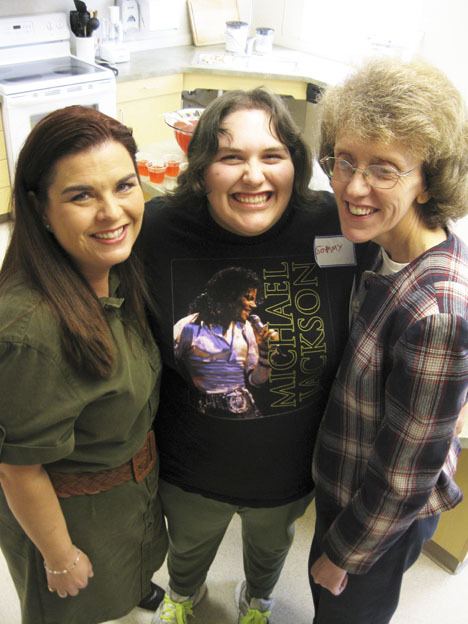Effective programming for special-needs students is nothing new to the Auburn School District. But now the learning community has brought something new to its educational landscape with one TAP of ingenuity.
School officials, accompanied by supporters, staff, parents and students, unveiled a new house of learning this week – the grand opening of a contemporary Transition Assistance Program (TAP) facility.
The TAP building, conveniently located next to Auburn High School, the swimming pool and other resources at 501 3rd St. NE, actually opened in February as the district’s newest facility specifically designed to help students with special needs between the ages of 18 and 21. The house received a celebrated open house Tuesday with a reception, presentation and student-led tours.
For educators and students, the TAP curriculum isn’t traditional, but vocational, social and practical. District students receive focused instruction to improve their daily living and work skills while increasing their access to the community.
For Jennifer Traufler, the school district’s executive director of student special services, it is a welcome site. A growing transition program had been limited, with special-needs students working between two cramped classrooms at the high school in step with the regular student body’s bell schedule.
But the “homey” and well-designed TAP facility provides 20-25 students with more flexibility and possibilities.
“That was really important to us,” Traufler said with a smile. “We were outgrowing everything.”
The facility is a dream come true for many people, with school officials and residents pulling together to make it happen. The single-story building stretches nearly 2,700 square feet and costs $800,000, a project financed through impact fees from local development over the past five years. A majority of the costs involved site development.
“As you can see, it’s a finished facility,” said Bob Newberry, capital projects coordinator with the school district. “We wanted it to fit in with the community, to be something that we and community members could look at and go, ‘That’s a nice facility. That belongs in Auburn.'”
Dr. Kip Herren, superintendent of the Auburn School District, hailed the new TAP facility, something he wished the district could have afforded years ago when his severely autistic daughter, April, was going through the Auburn schools system.
“It would have been nice at that time for April to be a member of the community like she is now,” Herren said.
Today, April is living well and independently in the community. But like many special-needs students then, she received instruction elsewhere, leaving those kids disconnected once they returned home.
And the connection to the community is crucial to transitioning special-needs students. That tie allows them to grow independently and socially.
The TAP facility is equipped with a large kitchen, a laundry room and other spacious features. Street-side access is also adequate.
“It’s very nice and restful,” said student Randi McDonough. “It’s away from the (high) school and the drama. It’s great.”
Elaine Hogg’s TAP students are responsible for the menu planning and preparation of meals each day. Visits to the local grocery stores are part of that process.
TAP program students also have the opportunity to do work in the community, even deliver mail to teachers. Some gain paying jobs. Others get better acclimated to their neighborhoods through activities, some fun-filled, others more occupational.
Hogg, who has been a special education teacher for seven years, has noticed a dramatic growth in her students, thanks in part to a better learning environment and responsive program.
“It’s been excellent. We love it. It’s wonderful,” said Hogg, who recently was honored as one of the school district’s top teachers of the academic year. “As teachers, we have the best jobs. It’s fun, and the kids are excited to come to school. They are eager to learn.
“We get out and do real-life applications,” she continued. “It’s provided our students with many more learning opportunities, such as cooking. There’s more individualized instruction. … We have a lot more freedom to access the community, which is a huge part of our day. … We are able to get much larger chunks of time to work with our students.”
The transition facility will better prepare and help students as they take important steps to adulthood, removed from high school and traditional classrooms.
“So they can have a slice of the American dream,” Herren said, “and the dignity of work.”


